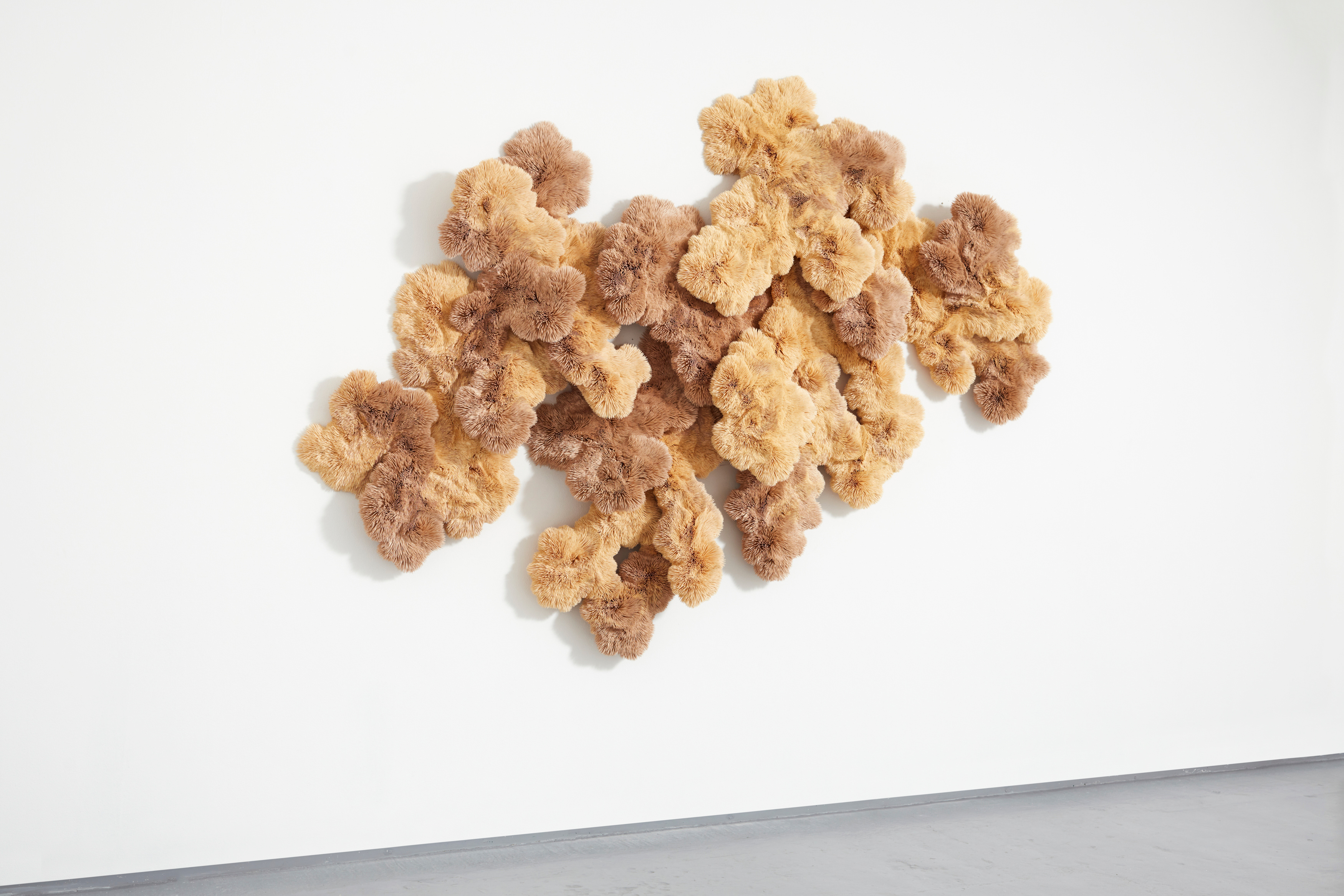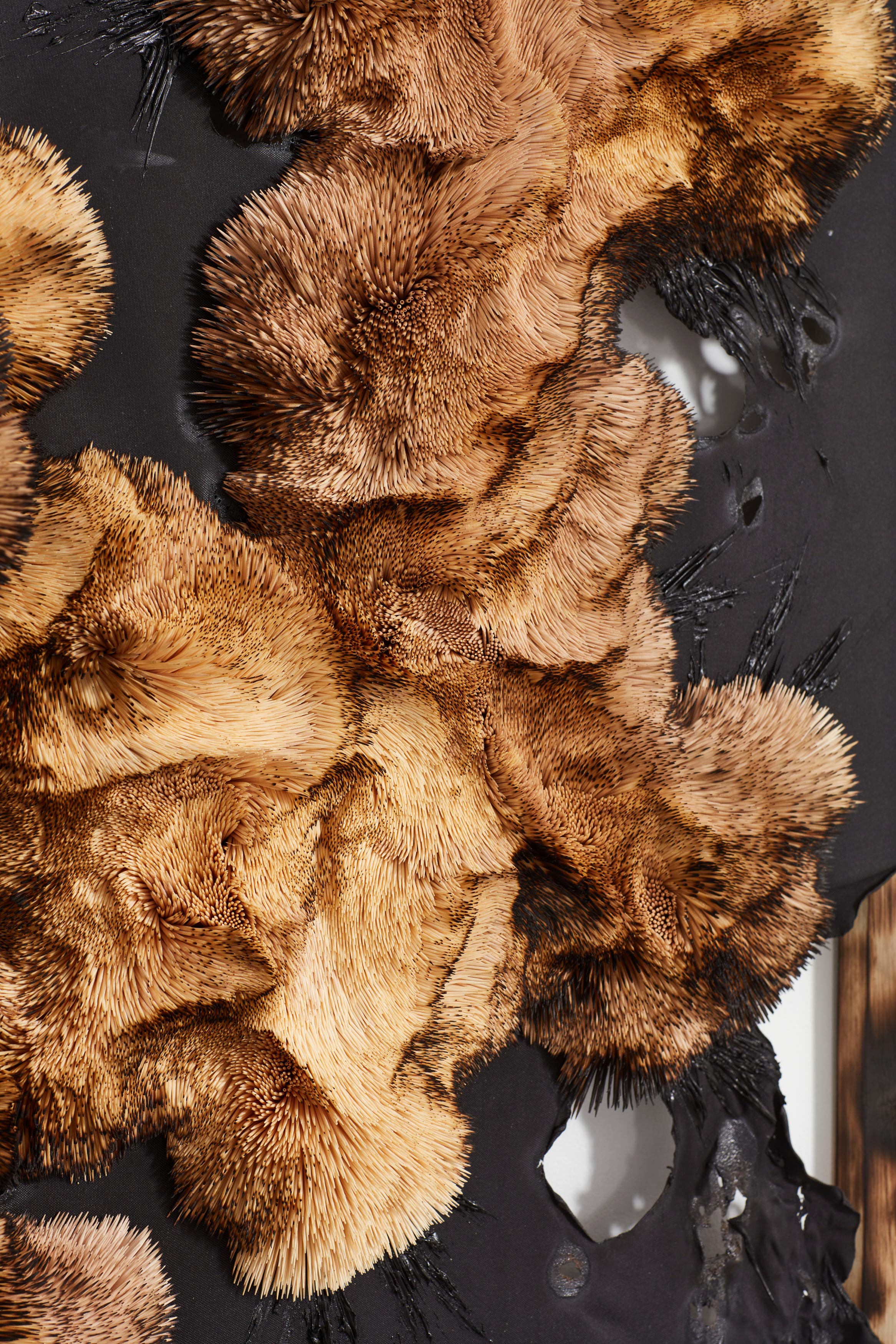
Remains to be seen | 2022 | Installation View
Eduardo Secci is pleased to announce the solo show by Chris Soal in the gallery space in Milan, in Via Olmetto, from September 21 to November 11, 2022.
The exhibition brings together new and never-before-seen works by the emerging South African artist, who through sculptural practice not only wants to express a conceptual engagement with the contexts and histories of the objects and materials he uses but also re-enforces the body as a site for knowledge reception and production.
Soal's work can be considered as a social abstraction that is deeply rooted and reflective of having grown up in Johannesburg. It seeks to make a poetic statement through the simplest of ways, engaging the viewer’s spatial awareness and perception while challenging societal assumptions of value. The use of discarded and mundane ephemera, such as toothpicks and bottle caps, along with concrete, rebar, electric fencing cable, and other industrial materials, intuitively develops the familiar to the point of the uncanny.
For his first solo show in Italy and his first exhibition with the Eduardo Secci gallery, Soal has decided to investigate the legacy of Arte Povera and the connection he feels with artists such as Alberto Burri and Giuseppe Uncini, the precursor of the movement.
The repeated motifs throughout this body of work are the residual, fissure, crack, tear, singe, burn, spill, and break. The artist is interested in how entropy manifests in the man-made: the organic presents itself as a renewable force capable of resisting it, but to which we must then also forego imposing purely our agenda.
The exhibition brings together new and never-before-seen works by the emerging South African artist, who through sculptural practice not only wants to express a conceptual engagement with the contexts and histories of the objects and materials he uses but also re-enforces the body as a site for knowledge reception and production.
Soal's work can be considered as a social abstraction that is deeply rooted and reflective of having grown up in Johannesburg. It seeks to make a poetic statement through the simplest of ways, engaging the viewer’s spatial awareness and perception while challenging societal assumptions of value. The use of discarded and mundane ephemera, such as toothpicks and bottle caps, along with concrete, rebar, electric fencing cable, and other industrial materials, intuitively develops the familiar to the point of the uncanny.
For his first solo show in Italy and his first exhibition with the Eduardo Secci gallery, Soal has decided to investigate the legacy of Arte Povera and the connection he feels with artists such as Alberto Burri and Giuseppe Uncini, the precursor of the movement.
The repeated motifs throughout this body of work are the residual, fissure, crack, tear, singe, burn, spill, and break. The artist is interested in how entropy manifests in the man-made: the organic presents itself as a renewable force capable of resisting it, but to which we must then also forego imposing purely our agenda.
This relationship between intuition and intention revealing in the suggestions of intestinal and cerebral form is what propels his work. In an ongoing engagement with the material, Soal threaded salvaged beer bottle tops onto electric fencing cable encouraging its natural coil and twist to determine the form of the entire work.
From a socio-political point of view, the presence of beer bottle tops strewn in the streets of Johannesburg and in their resemblance to entrails, speaks to a certain attitude towards consumption and its violent excesses. The writhing and serpentine nature of the work also calls to mind mythical figures such as Medusa and the Gorgons.
In researching versions of the myth of Perseus and Medusa, the artist interprets it by contemplating the metaphor of the role of art in society. While the direct encounter with the Gorgon transforms the individual into stone, art can be the medium, the mirror or the shield through which we can face complex issues without becoming paralyzed by them.
Compelling the viewer to question their own complicity within our society of excessive consumption and mass-production, Soal’s toothpicks works astound and confound the perception of this humble material. Foregrounding pressing ecological concerns, these works primarily attempt to expose the paradoxical relationship humankind has with nature, that of simultaneous dependence and domination.
From a socio-political point of view, the presence of beer bottle tops strewn in the streets of Johannesburg and in their resemblance to entrails, speaks to a certain attitude towards consumption and its violent excesses. The writhing and serpentine nature of the work also calls to mind mythical figures such as Medusa and the Gorgons.
In researching versions of the myth of Perseus and Medusa, the artist interprets it by contemplating the metaphor of the role of art in society. While the direct encounter with the Gorgon transforms the individual into stone, art can be the medium, the mirror or the shield through which we can face complex issues without becoming paralyzed by them.
Compelling the viewer to question their own complicity within our society of excessive consumption and mass-production, Soal’s toothpicks works astound and confound the perception of this humble material. Foregrounding pressing ecological concerns, these works primarily attempt to expose the paradoxical relationship humankind has with nature, that of simultaneous dependence and domination.



Gorgon, 2022
Discarded Beer Bottle Caps threaded onto Electric Fencing Cable, held in Polyurethane Sealant on Board
119 x 145.5 x 13 cm



Spolia, 2022
Discarded Beer Bottle Caps threaded onto Electric Fencing Cable, held in Polyurethane Sealant on Board, Glass Fibre Reinforced Concrete with Used Motor Car Oil and Rebar
142 x 146 x 14 cm

Remains to be seen | 2022 | Installation View




Masquerade, 2022
Bamboo and Birch Wood Toothpicks, held in Polyurethane Sealant on Board
201 x 283 x 32 cm




Kindling, 2022
Burnt and Unburnt Bamboo Toothpicks, held in Polyurethane Sealant on Ripstop Fabric, stretched on Obeche Wood Stretcher
175 x 153 x 25 cm



La Peau de Chagrin, 2022
Eroded Sandpaper
61 x 53 cm
Variable Edition of 5



Hyde, 2022
Burnt and Unburnt Bamboo Toothpicks, held in Polyurethane Sealant on Ripstop Fabric, stretched on Obeche Wood Stretcher
106 x 100 x 14 cm